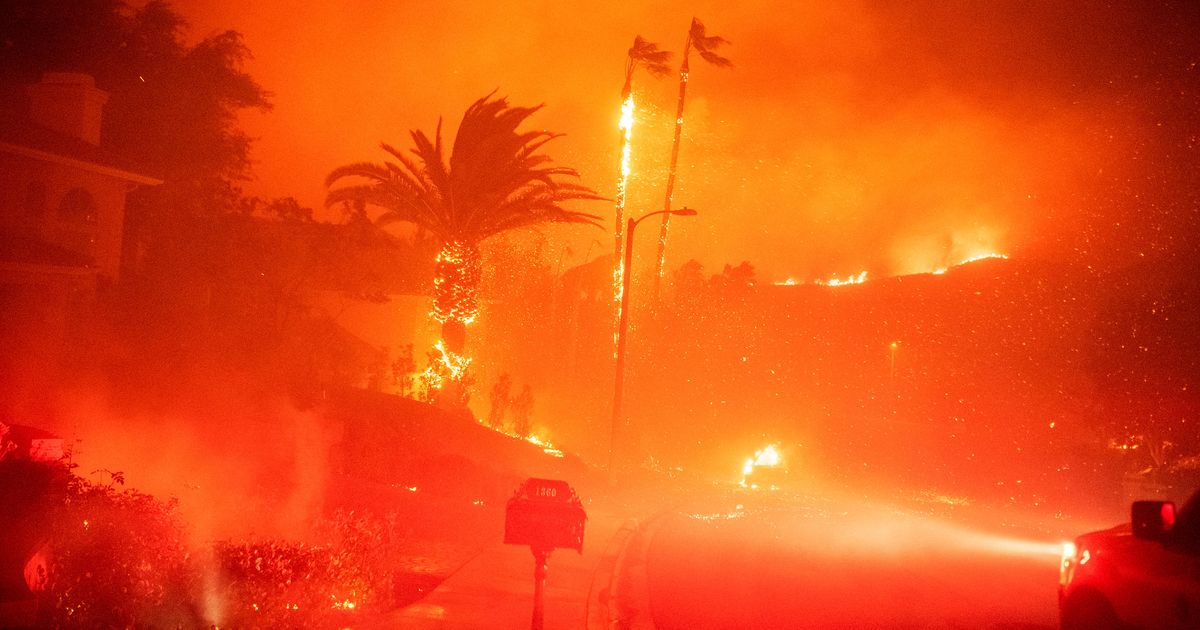
Scenes from the Woolsey Fire : Ventura County on the first night of the blaze in November 2018. Photo: Stuart Palley You could see the smoke from space. The plume from last November’s Woolsey fire swept out toward Catalina and into the Pacific beyond by the same Santa Ana winds that had carried the flames all the way down the Malibu mountainside to the beach. The aftermath was eerie, the sunsets gorgeous, toxic ash falling from the sky in heavy lumps. Horses and alpacas and a giraffe wandered the sand, having fled flames that tore through local stables and ranches and a vineyard’s private zoo. The burn scar on the land, when the smoke cleared, stretched 152 square miles through Point Dume and Malibu and up to Calabasas and Westlake Village: 96,000 densely populated acres burned, 300,000 people evacuated from 100,000 homes, a city of 10 million terrorized in ways both familiar and unprecedented. In the mythology of Los Angeles, fires are an eternal feature of the landscape — more permanent than any human settlement and an intimation that the city and its people remain rugged, no matter how comfortably plastic and protected life in its wealthy canyon sprawl might…